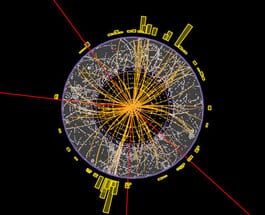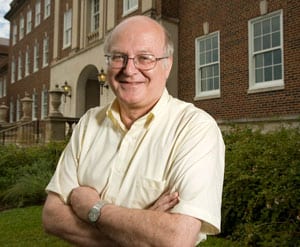Dallas Observer science writer Brantley Hargrove interviewed SMU physicist Ryszard Stroynowski about the news that scientists at CERN have seen hints of the Higgs boson, a fundamental particle theorized to explain why matter has mass. Stroynowski and other SMU faculty and students have played a role in the recent findings, which researchers hope to confirm in future CERN experiments.
Researchers at Switzerland-based CERN, the largest high-energy physics experiment in the world, have been seeking the Higgs boson since it was theorized in the 1960s. The so-called “God” particle is believed to play a fundamental role in solving the important mystery of why matter has mass.
EXCERPT:
By Brantley Hargrove
Dallas Observer
You’ve probably heard that an international contingent of physicists in Switzerland is this close to identifying the Higgs boson, aka the “God particle.”Currently, the Higgs is the theoretical mechanism that explains how matter obtained mass following the Big Bang. The theory is that it imbued the basic building blocks of the stars and planets and everything else with mass and, thus, gravity, so that the swirling particles thrown forth in that great cataclysm of creation eventually settled down and coalesced, making life possible.
The Higgs is the last undiscovered piece in the Standard Model of Physics, which describes “the basic building blocks of matter and their interactions.” Proving or disproving the existence of the Higgs would do no less than aid in the explanation of gravity, the evolution of the universe and the Big Bang, which they’re trying to recreate on a small scale in the Large Hadron Collider.
“To me, it’s like being a member of the Mayflower,” says Ryszard Stroynowski, an SMU physics professor.
Along with other faculty and graduate students from Southern Methodist University, he’s part of the international search for the Higgs — a sort of study-abroad program with galactic implications.
Unfair Park put in a call to Stroynowski, who’s leading the SMU team. Since 1994, he and other physicists have been involved in the development and construction of a device that can detect the fragments created by collisions of protons in the particle accelerator — and the accompanying electrons and photons, potentially the measurable hallmarks of the Higgs.


 A mathematical model determines which nations are more stable and which are more likely to break up
A mathematical model determines which nations are more stable and which are more likely to break up SMU to help solve dangerous refugee water issues
SMU to help solve dangerous refugee water issues Anthropology researcher to study human-fire-climate interactions
Anthropology researcher to study human-fire-climate interactions